
HOME
INTRO
SYMBOLS
ALMANAC
ECONOMY
GEOGRAPHY
STATE MAPS
PEOPLE
FORUM
NEWS
COOL SCHOOLS
STATE QUIZ
STATE LINKS
BOOK STORE
MARKETPLACE
NETSTATE.STORE
NETSTATE.MALL
GUESTBOOK
CONTACT US


Tweet
Double click on word for definition.
Georgia State Reptile
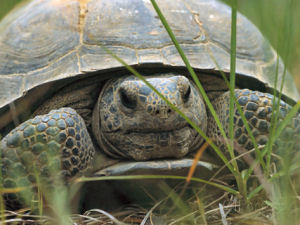
Georgia State Reptile: Gopher Tortoise
Photographs
Adoption of the gopher tortoise arose out of concern for declining numbers ostensibly due to declining habitat and fear for its survival.
The gopher tortoise (Gopherus polyphemus) became the official Georgia state reptile when Georgia Governor Joe Frank Harris signed House Bill No. 531 into law on March 30, 1989.
The gopher tortoise resides on another state list. Florida adopted the gopher tortoise as its state tortoise in 2008.
STATE GOVERNMENT -- GOPHER TORTOISE; DESIGNATION AS OFFICIAL STATE REPTILE.
No. 375 (House Bill No. 531).
AN ACT
To amend Article 3 of Chapter 3 of Title 50 of the Official Code of Georgia Annotated, relating to other state symbols, so as to designate the gopher tortoise as the official state reptile; to provide for related matters; to repeal conflicting laws; and for other purposes.
WHEREAS, the gopher tortoise (Gopherus polyphemus) belongs to a group of land tortoises that originated in North America 60 million years ago, thus making it one of the oldest living species native to Georgia; and
WHEREAS, the gopher tortoise population is scattered throughout the southeastern United States, with most being found in southern Georgia and north central Florida; and
WHEREAS, the gopher tortoise benefits the ecology by digging burrows up to 40 feet long and 10 feet deep which provide year-round shelter from predators and weather for more than three dozen other animal species, including some threatened species; and
WHEREAS, recent studies indicate that the gopher tortoise population is in decline due to mankind's activities, and that by the year 2000 the gopher tortoise may not exist outside of protected areas; and
WHEREAS, this ancient and ecologically beneficial reptile is deserving of the attention and appreciation of the citizens of this state by designation as the official state reptile.
NOW, THEREFORE, BE IT ENACTED BY THE GENERAL ASSEMBLY OF GEORGIA:
Section 1. Article 3 of Chapter 3 of Title 50 of the Official Code of Georgia Annotated, relating to other state symbols, is amended by adding a new Code Section 50-3-63 at the end thereof to read as follows:
"50-3-63. The gopher tortoise is designated as the official Georgia state reptile."
Section 2. All laws and parts of laws in conflict with this Act are repealed.
Approved March 30, 1989.
The gopher tortoise is considered a "keystone," or "key" species. This means that the species plays a critical role in maintaining the "structure" of an ecological community. Additionally, a key species has a "proportionately large" influence on species diversity and community structure. Its survival is "key" to maintaining a particular community structure and diversity within the structure.
The gopher tortoise is currently under close observation by the U.S. Fish and Wildlife Service.
Georgia Law
Georgia State Reptile: Gopher Tortoise
Credit: Randy Browning, U.S. Fish and Wildlife Service
The following information was excerpted from the Code of Georgia, Title 50, Chapter 3, Article 3, Section 50-3-63.
TITLE 50. STATE GOVERNMENT
CHAPTER 3. STATE FLAG, SEAL, AND OTHER SYMBOLS
ARTICLE 3. OTHER STATE SYMBOLS
O.C.G.A. § 50-3-63 (2014)
§ 50-3-63. Official reptile
The gopher tortoise is designated as the official Georgia state reptile.
HISTORY: Code 1981, § 50-3-63, enacted by Ga. L. 1989, p. 297, § 1.
Sources...
"ACTS AND RESOLUTIONS OF THE GENERAL ASSEMBLY OF THE STATE OF GEORGIA 1989." GALILEO: Georgia Legislative Documents. The Georgia General Assembly, 30 Mar. 1989. Web. 25 Aug. 2014.
"LexisNexis® Custom Solution: Georgia Code Research Tool." LexisNexis® Custom Solution: Georgia Code Research Tool. N.p., n.d. Web. 17 Aug. 2014.
Shearer, Benjamin F. and Barbara S. State Names, Seals, Flags and Symbols: A Historical Guide Third Edition, Revised and Expanded. Westport, Conn: Greenwood Press, 3 Sub edition, 2001.
Additional Information
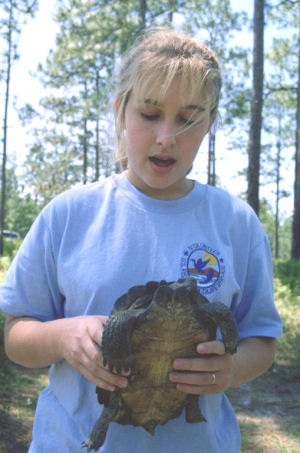
Georgia State Reptile: Gopher Tortoise
Photograph: U.S. Fish and Wildlife Service
Gopher Tortoise: Reptile profile from the Natural Resource Conservation Service - Georgia.
About the Gopher Tortoise: from the Gopher Tortoise Council.
Fact Sheet: Gopher Tortoise: Defenders of Wildlife website.
Gopherus polyphemus (florida) Gopher Tortoise: The Encyclopedia of Life v2: Providing Global Access to Knowledge About Life on Earth.
Gopherus polyphemus (Florida) Gopher Tortoise: The University of Michigan Museum of Zoology: Animal Diversity Web.
Gopherus polyphemus - (Daudin, 1802) Gopher Tortoise: A network connecting science with conservation - NatureServe Explorer: An Online Encyclopedia of Life.
Gopherus polyphemus (Daudin, 1802): Integrated Taxonomic Information System (ITIS) Here you will find authoritative taxonomic information on plants, animals, fungi, and microbes of North America and the world.
Website: Gopher Tortoise Council, Atlanta, Georgia.
State reptiles: Complete list of official state reptiles from NETSTATE.COM
More symbols & emblems: Complete list of official Georgia state symbols from NETSTATE.COM.

At Home with
the Gopher Tortoise
Madeleine Dunphy
At Home with the Gopher Tortoise: The Story of a Keystone Species, Madeleine Dunphy. 32 pages. Publisher: Web of Life Children's Books (July 29, 2010 Reading level: Grades K-4. At Home with the Gopher Tortoise: The Story of a Keystone Species teaches young readers about the gopher tortoise and the more than 360 different kinds of animals that depend on it for survival. From owls to rabbits, from skunks to scorpions, the gopher tortoise provides creatures with shelter, food, or a place to raise their young. In this fascinating tale of ecological interdependency, glorious illustrations reveal the gopher tortoise's world both below and above ground, showing children how the fate of one species is important to so many others.
Named an "Outstanding Science Trade Book for Students K-12" by the National Science Teacher's Association (NSTA) and Children's Book Council.
Awarded the 2011 Medal for Environmental Issues by the Moonbeam Children's Book Awards
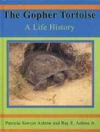
The Gopher Tortoise
Ray E. Ashton
The Gopher Tortoise: A Life History, Ray E. Ashton. 67 pages. Publisher: Pineapple Press (June 1, 2004) Reading level: Grades 5+. The Gopher Tortoise is an excellent representation of all the upland wildlife in the Southeast United States. As humans encroach on their habitat, gopher tortoises find themselves in a desperate struggle for territory and food, indeed for the very survival of their species.
And survive they must. The survival of so many other species depends on them. The burrow of a gopher tortoise provides shelter (and sometimes food) to about 400 other species. Within these dark tunnels made and maintained by the gopher tortoise, species have been found that live nowhere else on earth.
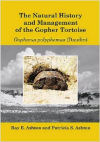
The Natural History and Management of the Gopher Tortoise, Ray E. Ashton & Patricia S. Ashton. 288 pages. Publisher: Krieger Publishing Company; Original edition (February 1, 2007) This is the first handbook on tortoise management and research techniques that can be applied to gopher tortoises and the concepts can be used for many species. It is designed to be the manual of basic background information on why and how to carry out field methods for environmental consultants, State and Federal agency personnel, tortoise reseachers, and land managers. Many tricks of the trade on how to count burrows, excavate, and trap tortoises are given based on the work of past researchers and the groundbreaking work of the Ashtons. No other publication currently exists that brings together all the methods and techniques for gopher tortoise management which can be used to review techniques used with other tortoises and turtles. Students and environmental consultants working with gopher tortoises and other upland species will find this handbook indispensable.
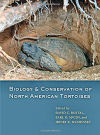
Biology and Conservation of North American Tortoises, Edited by David C. Rostal, Earl D. McCoy, and Henry R. Mushinsky. 208 pages. Publisher: Johns Hopkins University Press (June 13, 2014) Providing the first comprehensive treatment of North America’s tortoises, Biology and Conservation of North American Tortoises brings together leading experts to give an overview of tortoise morphology, taxonomy, systematics, paleontology, physiology, ecology, behavior, reproduction, diet, growth, health, and conservation. The contributors carefully combine their own expertise and observations with results from studies conducted by hundreds of other researchers. The result is a book that belongs in the library of every herpetologist.

